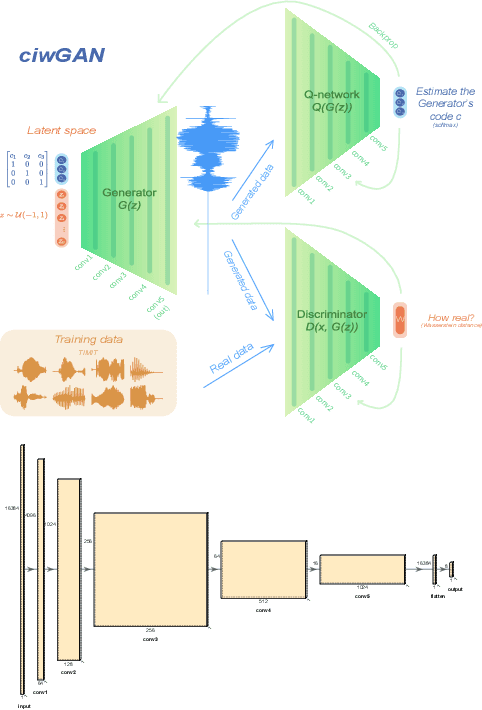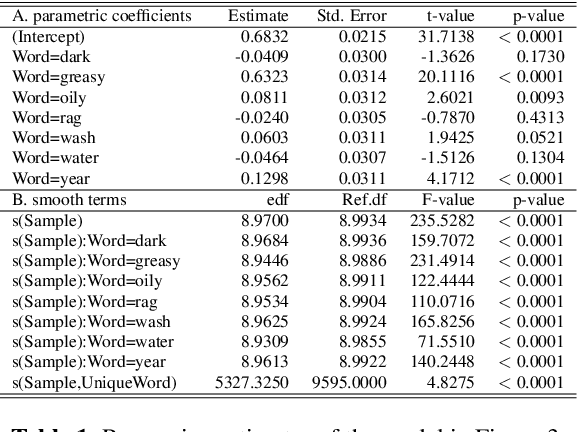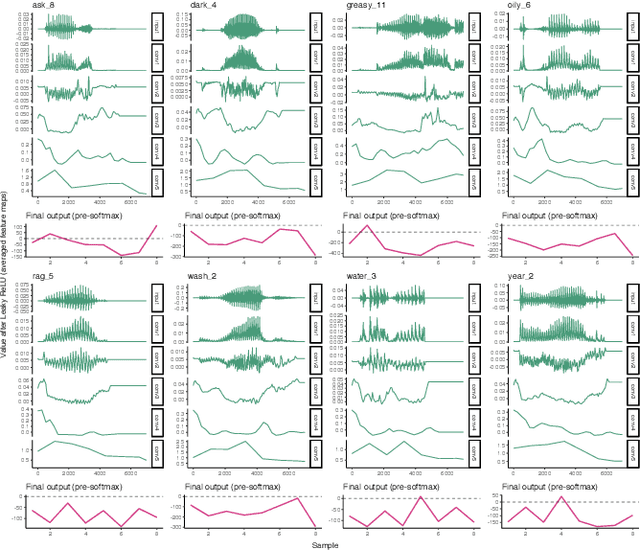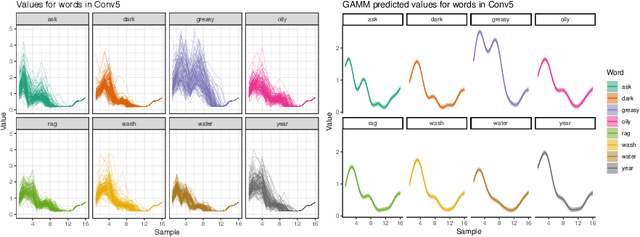Interpreting intermediate convolutional layers in unsupervised acoustic word classification
Paper and Code
Oct 05, 2021



Understanding how deep convolutional neural networks classify data has been subject to extensive research. This paper proposes a technique to visualize and interpret intermediate layers of unsupervised deep convolutional neural networks by averaging over individual feature maps in each convolutional layer and inferring underlying distributions of words with non-linear regression techniques. A GAN-based architecture (ciwGAN arXiv:2006.02951) that includes three convolutional networks (a Generator, a Discriminator, and a classifier) was trained on unlabeled sliced lexical items from TIMIT. The training results in a deep convolutional network that learns to classify words into discrete classes only from the requirement of the Generator to output informative data. The classifier network has no access to the training data -- only to the generated data -- which means lexical learning needs to emerge in a fully unsupervised manner. We propose a technique to visualize individual convolutional layers in the classifier that yields highly informative time-series data for each convolutional layer and apply it to unobserved test data. Using non-linear regression, we infer underlying distributions for each word which allows us to analyze both absolute values and shapes of individual words at different convolutional layers as well as perform hypothesis testing on their acoustic properties. The technique also allows us to tests individual phone contrasts and how they are represented at each layer.
 Add to Chrome
Add to Chrome Add to Firefox
Add to Firefox Add to Edge
Add to Edge